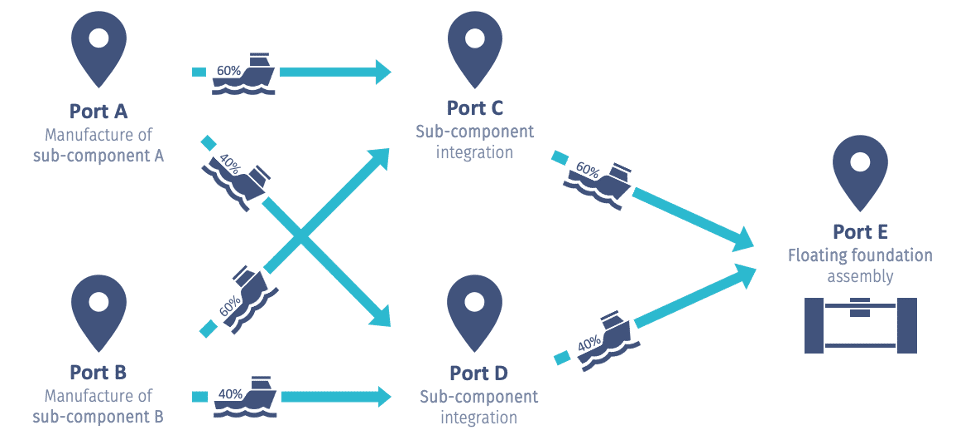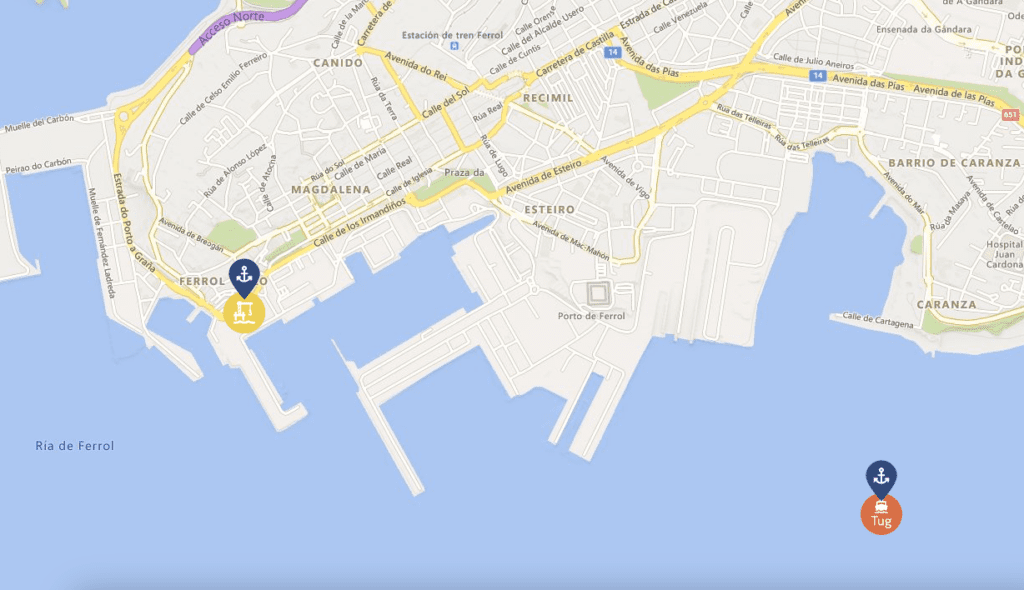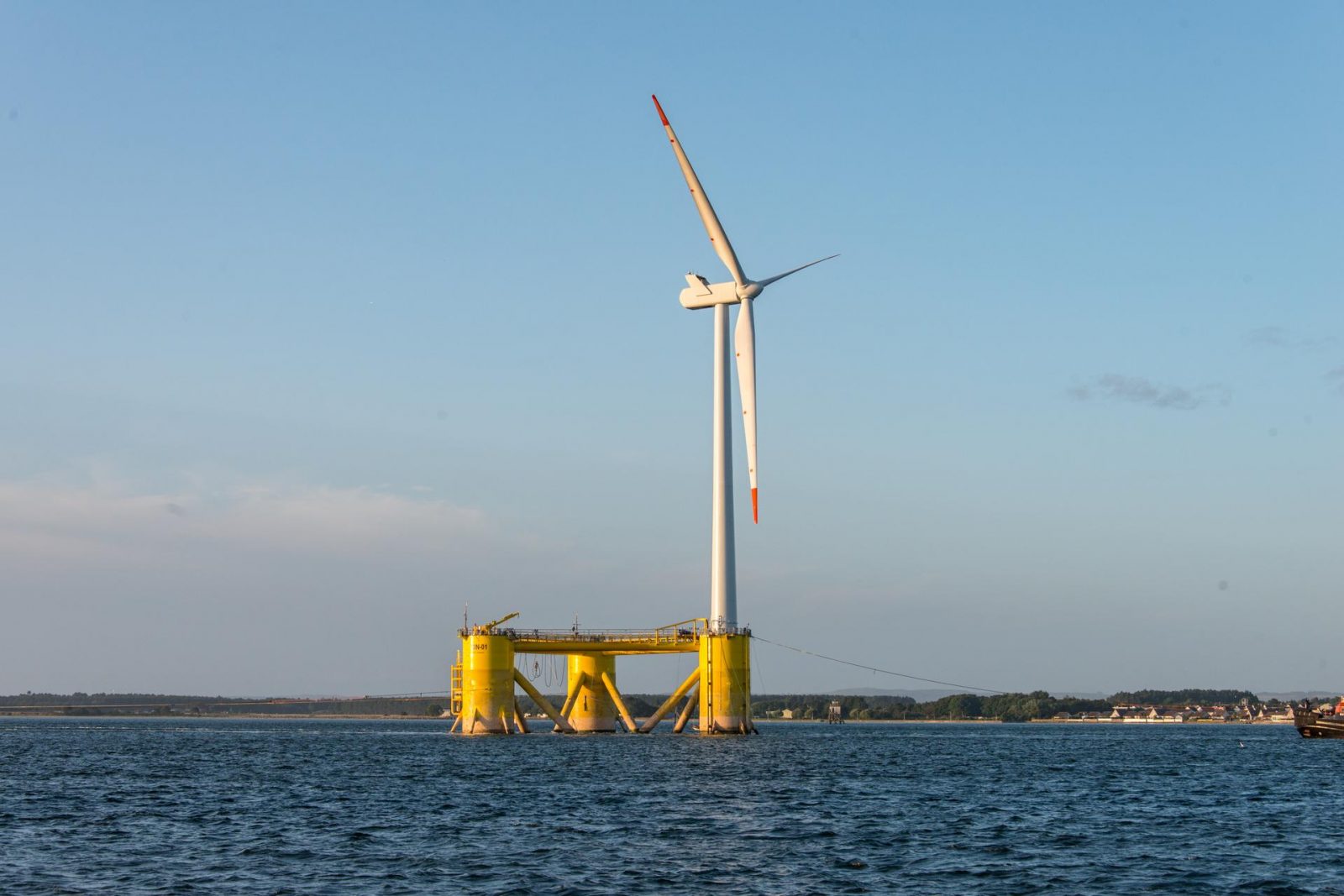Floating wind, known for its ability to tap into wind resources in offshore locations with greater depth, introduces a host of complexities requiring innovative solutions. At the heart of these challenges is the critical task of selecting suitable floating foundation options. The unique nature of floating foundations introduces inherent risks, with a significant concern being the potential inability to deliver projects due to a lack of adequate build space for these large structures.
These risks can now be visualized in Shoreline Design so steps can be taken to mitigate them. Shoreline Design steps forward as a strategic partner, offering not just visualization tools but also proactive mitigation strategies to address concerns and ensure the successful realization of floating wind projects.
Lack of build space for floating foundations
Floating foundations are huge. This poses an equally huge challenge for the industry: where and how should these be built, and using which materials? Shoreline Design’s inventory management feature allows users to model port capacity and thus evaluate the best scenario for building floating foundations.
Developers can carefully assess the cost-effectiveness and time efficiency of integrating sub-components at a single site versus multiple locations. This capability empowers decision-makers to strategically divide sub-component integration tasks between different ports before final assembly, optimizing the construction process and mitigating potential challenges.
As case example, is integrating the sub-components in a floating foundation at one site or two the most cost- or time-efficient? Shoreline Design allows users to model splitting these assembly (and associated transport) tasks between different sites, and evaluate the pros and cons. In the example below, the user has decided to divide up the sub-component integration tasks at a 40:60 ratio between Ports C and Ports D, prior to floating foundation assembly (welding) at a different port:

Lack of storage space for assembled floating foundations at or alongside quayside
Beyond the lack of build space, the offshore wind industry grapples with the challenge of insufficient storage space for assembled floating foundations at or alongside quaysides. The sheer scale of these structures limits the number of floating foundations that marshalling and assembly ports can host, necessitating a streamlined supply chain to minimize operational bottlenecks. Few, if any, marshalling and assembly ports can host more than 1-2 floating foundations at and on the quayside. The scale of floating foundations mean that the supply chain moving these in and out of port for WTG assembly needs to be a very smooth operation to minimise unnecessary costs.
Shoreline’s inventory management solution allows users to model a maximum capacity per component in a port. A small marshaling port, for example, may be able to store a maximum of 25 blades, 10 nacelles, 10 of each type of tower component, but only 6 assembled towers. The following graph from Construction Design demonstrates how the Shoresim simulation engine can be set to restrict the number of parts arriving at a given time, and the number of towers being assembled, to match real-world scenarios.

Shoreline’s inventory management supports optimizing the handling of components, allowing users to model the maximum capacity per component in a port. Through advanced simulations, as illustrated in Construction Design’s graph, developers can fine-tune the flow of blades, nacelles, tower components, and assembled towers.
Lack of wet storage
Wet storage space scarcity emerges as another critical challenge highlighted by Shoreline’s customers. Due to the lack of space for floating foundations at ports, it is especially critical to model floating foundations being stored in wet storage, either prior to arriving in port for WTG integration, after WTGs have been integrated (e.g. while waiting on a towing vessel), or both.
Shoreline Design rises to the occasion, accommodating this complexity in its modeling capabilities. For example, in this image taken from Construction Design, WTGs and floating foundations are integrated in the main harbor, then floated out to wet storage with a tug, before being towed out to sea to be installed.

This meticulous modelling of wet storage scenarios enhances project planning and execution, ensuring a seamless transition between construction phases and minimizing delays.
Want to find out more how Shoreline can help you model your floating scenarios? Watch the video below 👇
A video overview is provided below to delve even deeper into the capabilities of Shoreline Design and how it can assist in modelling the specific challenges of your floating wind scenarios.
Final: Construction Design: WTG + Floater Package from Shoreline on Vimeo.
In addition to addressing the immediate challenges of building space, storage, and wet storage, Shoreline Wind provides a comprehensive suite of tools that assist developers in navigating the complexities of offshore wind energy construction and O&M projects.
The potential of floating wind projects to access untapped wind resources in deep offshore areas is key in the future renewable energy landscape. However, to fully realize this potential, the industry must navigate and overcome complex challenges, ranging from technological and logistical hurdles to environmental considerations. Shoreline Wind contributes as a strategic partner in this journey.

